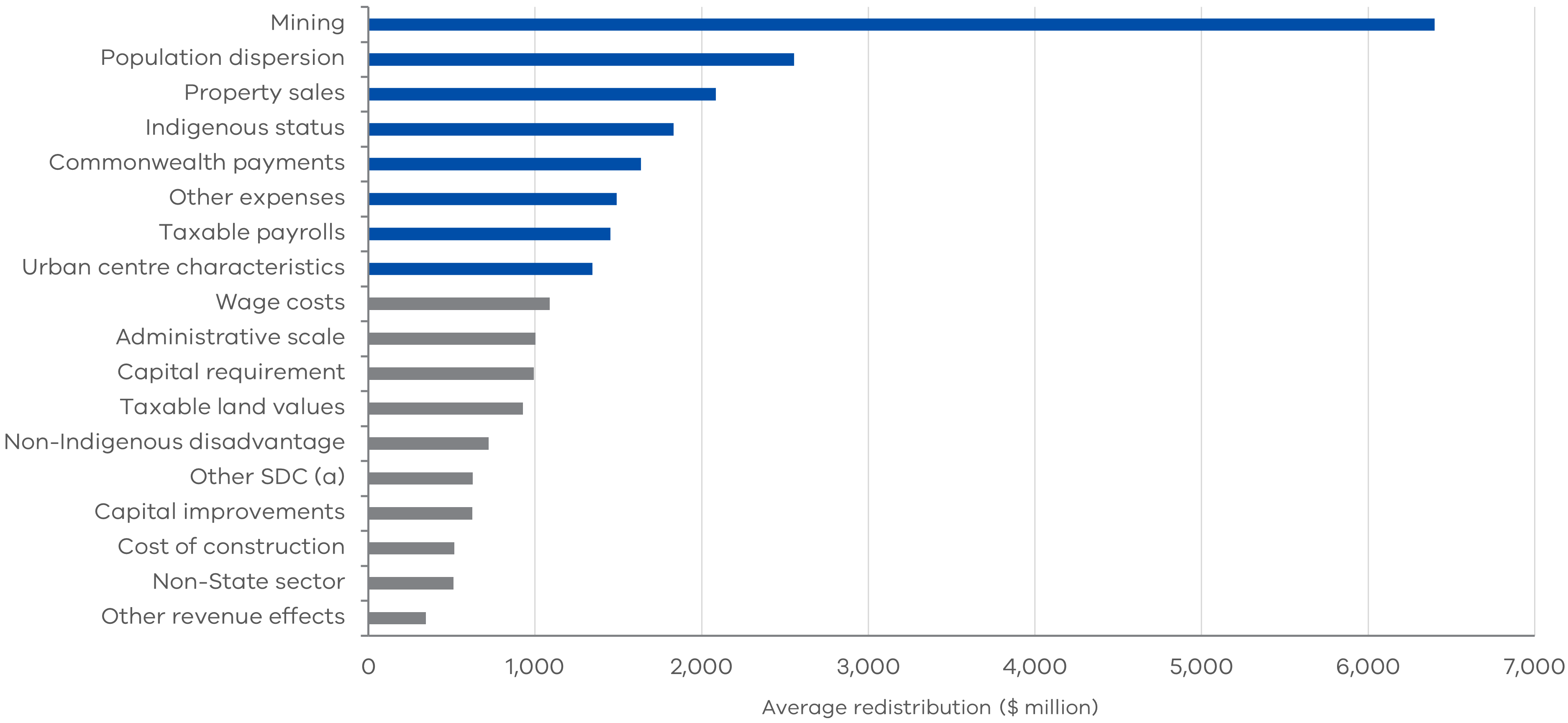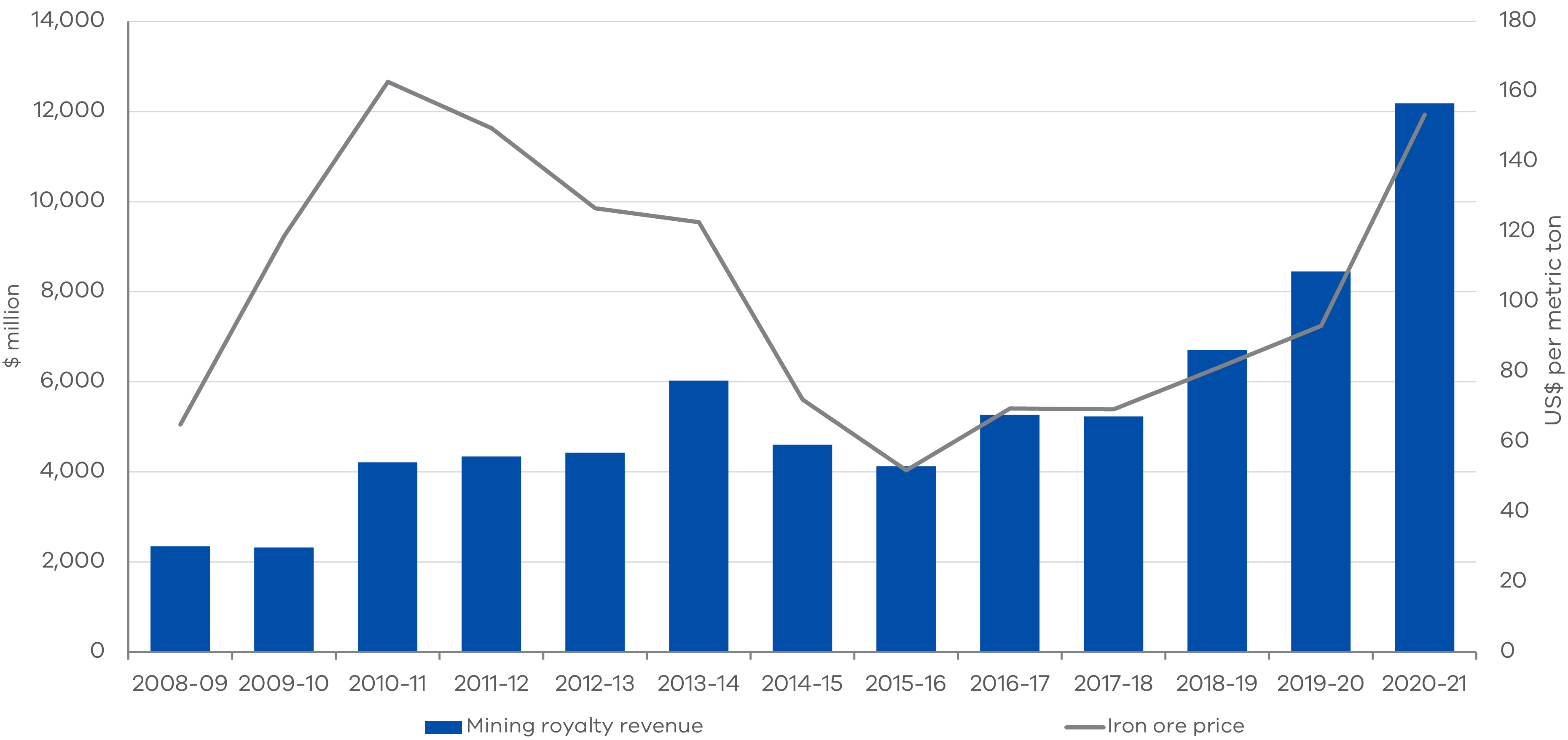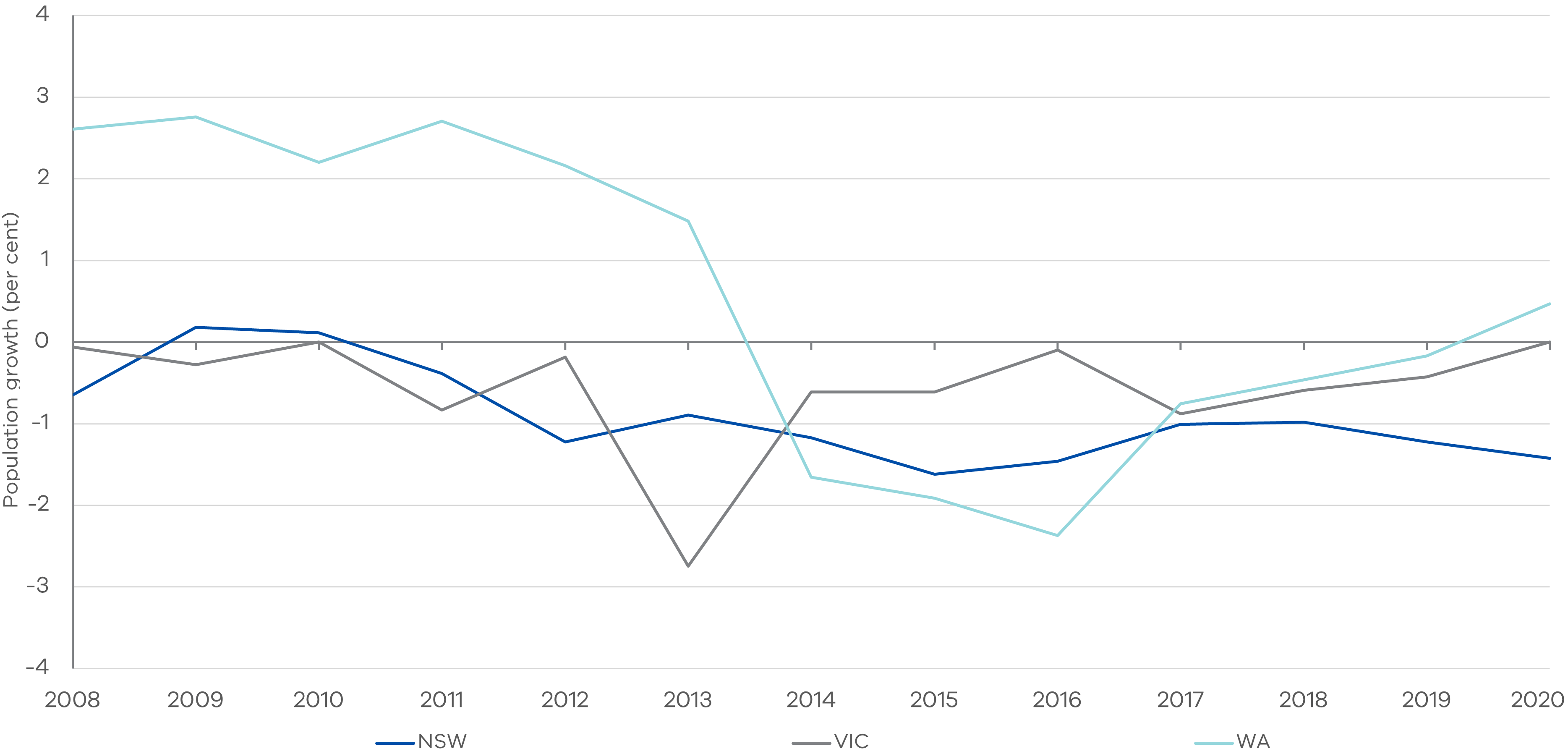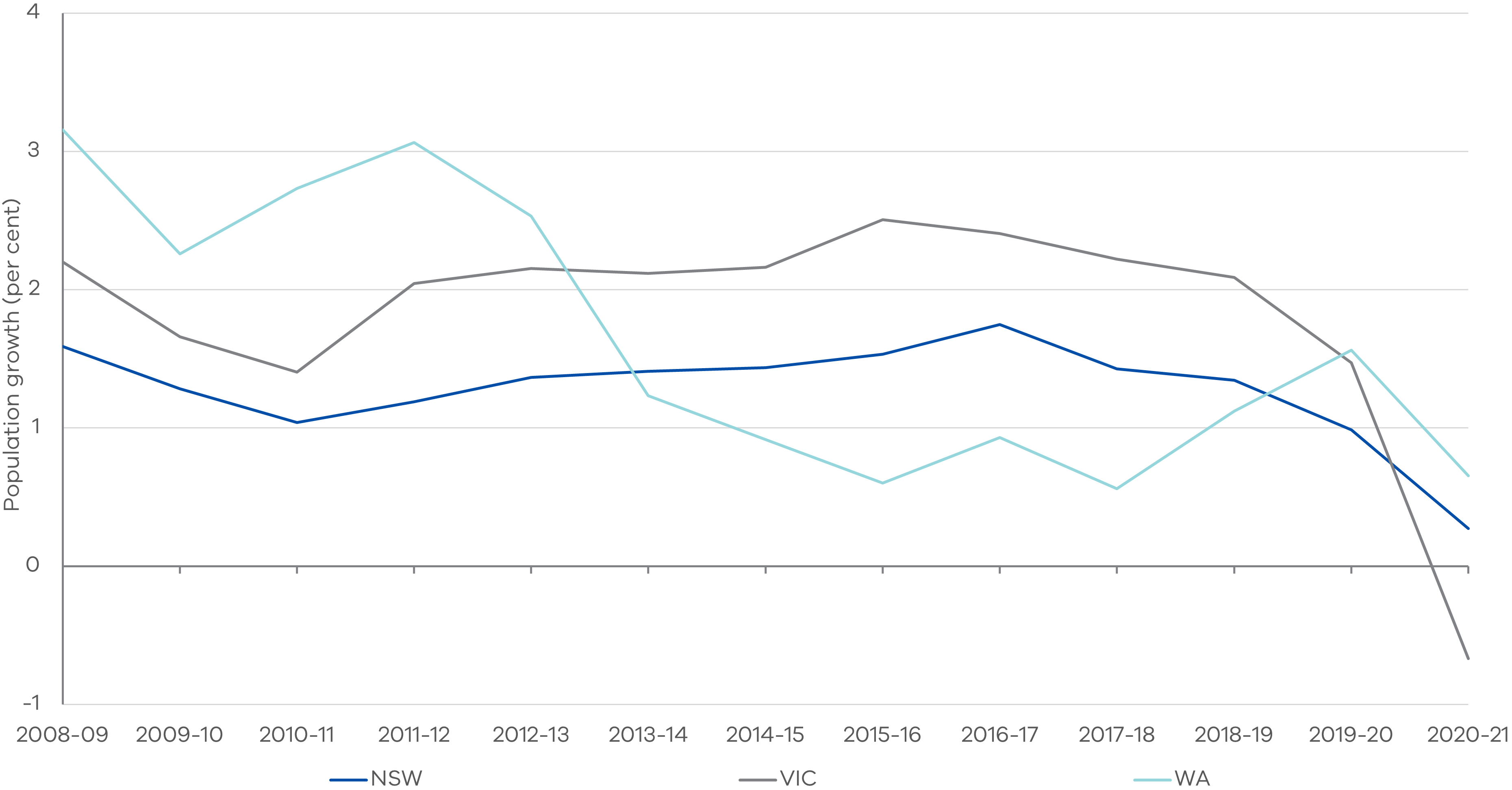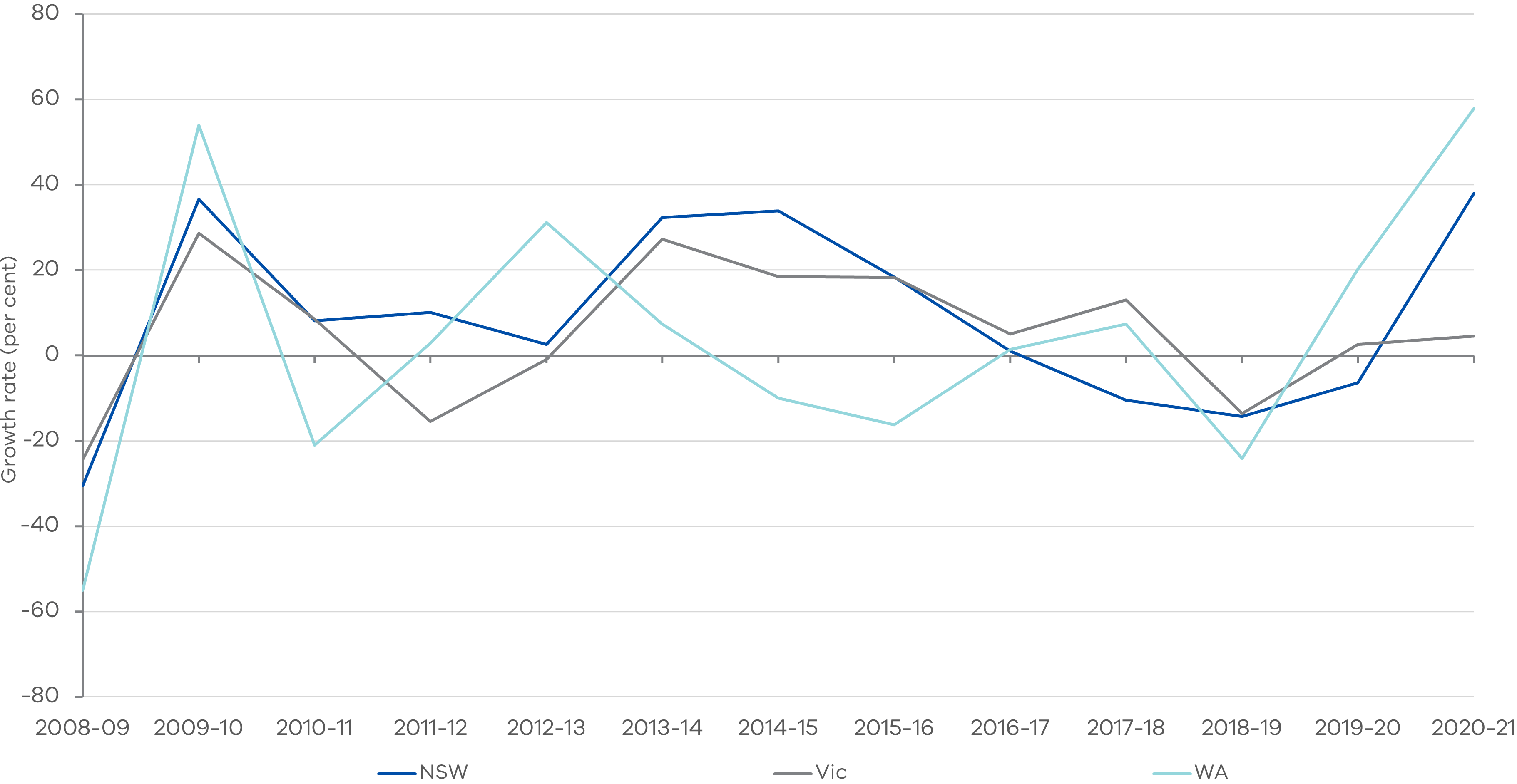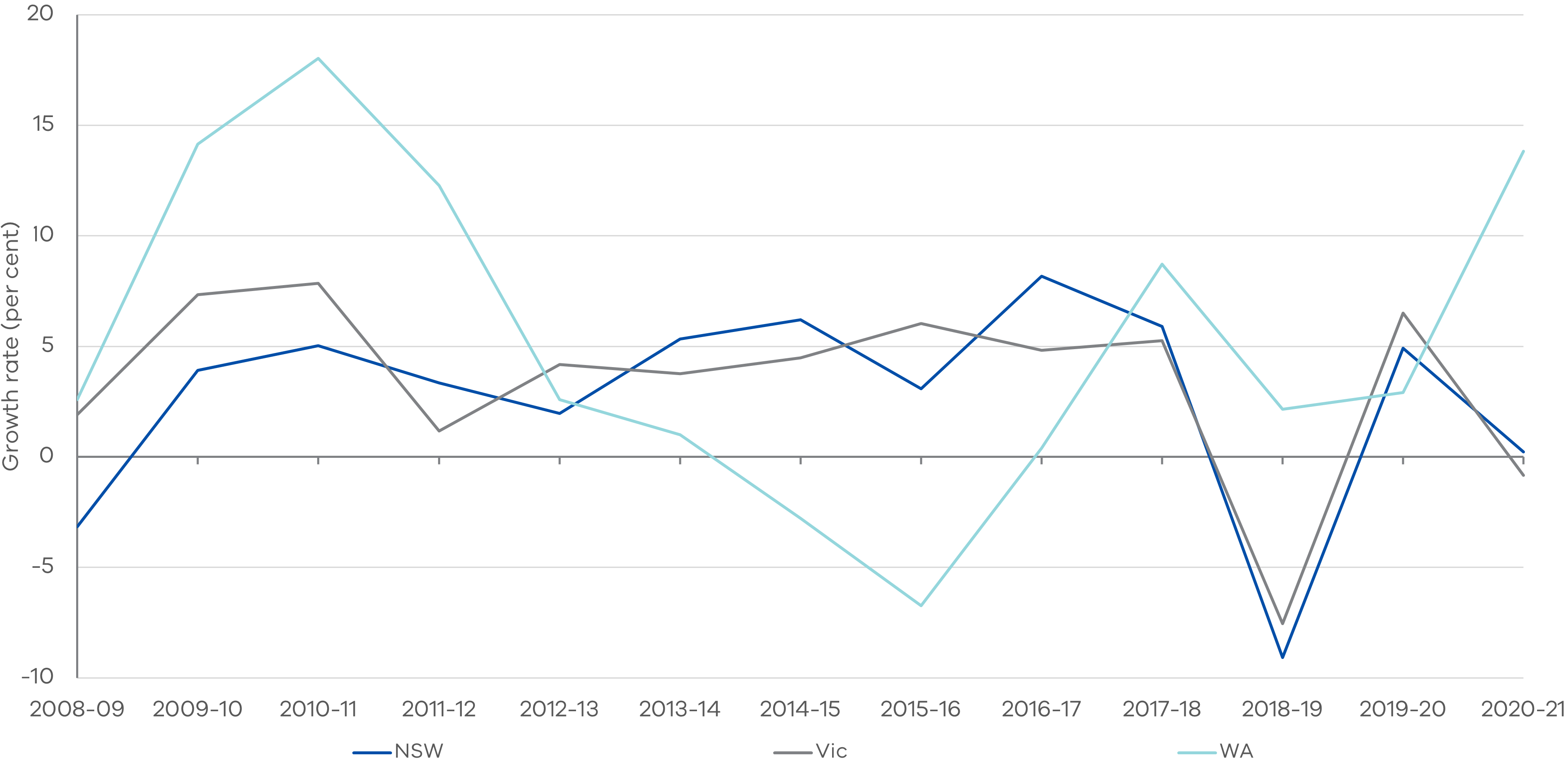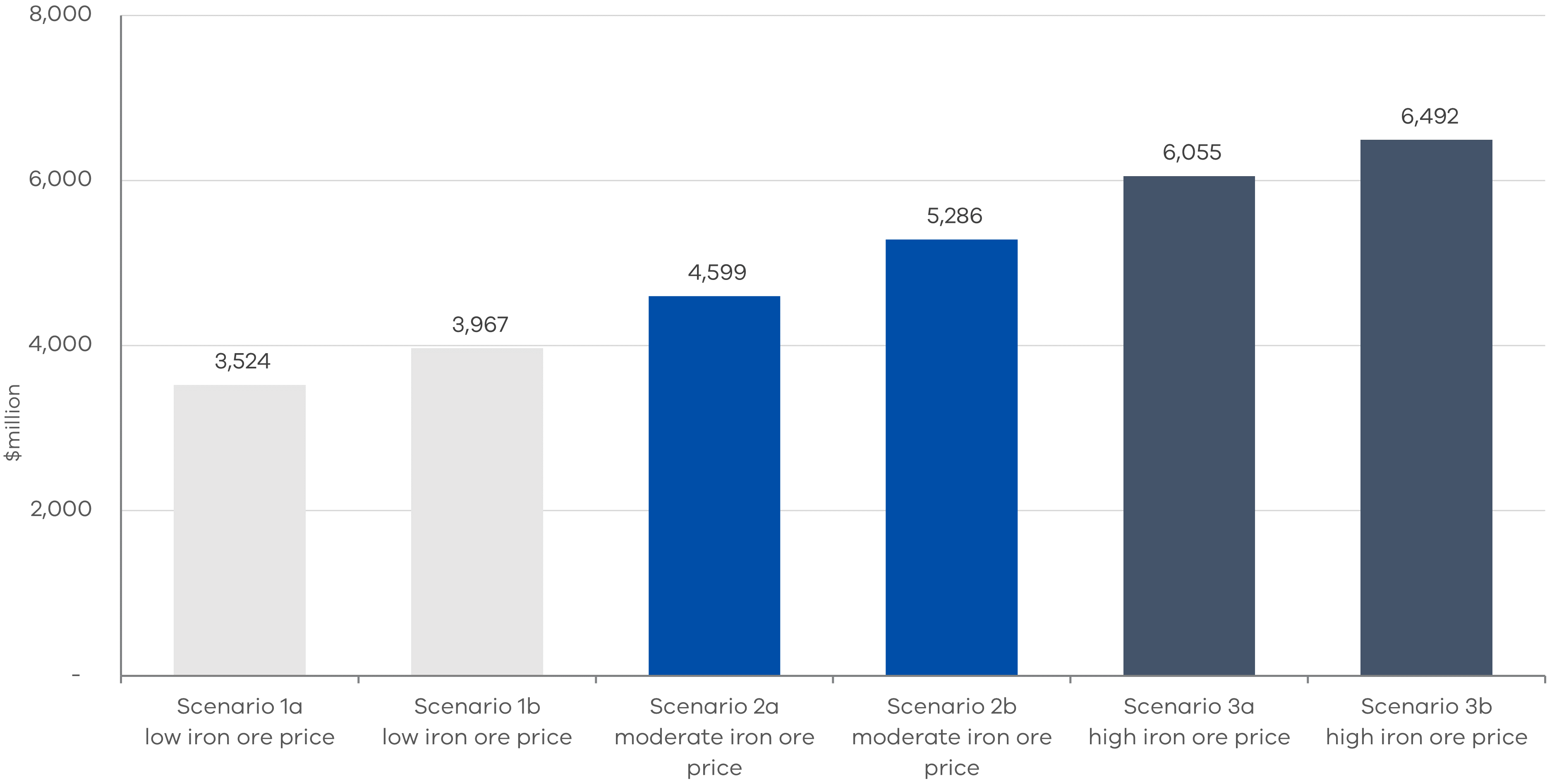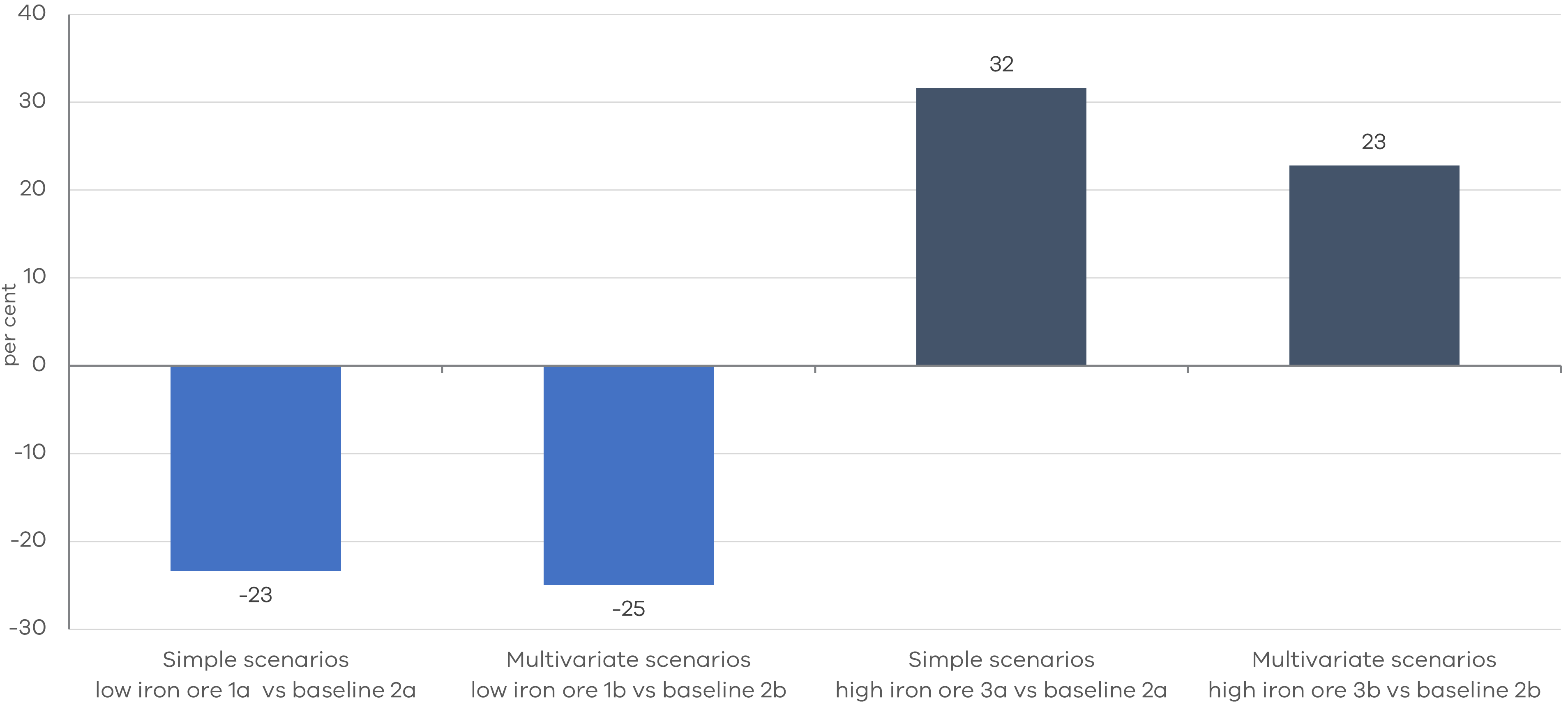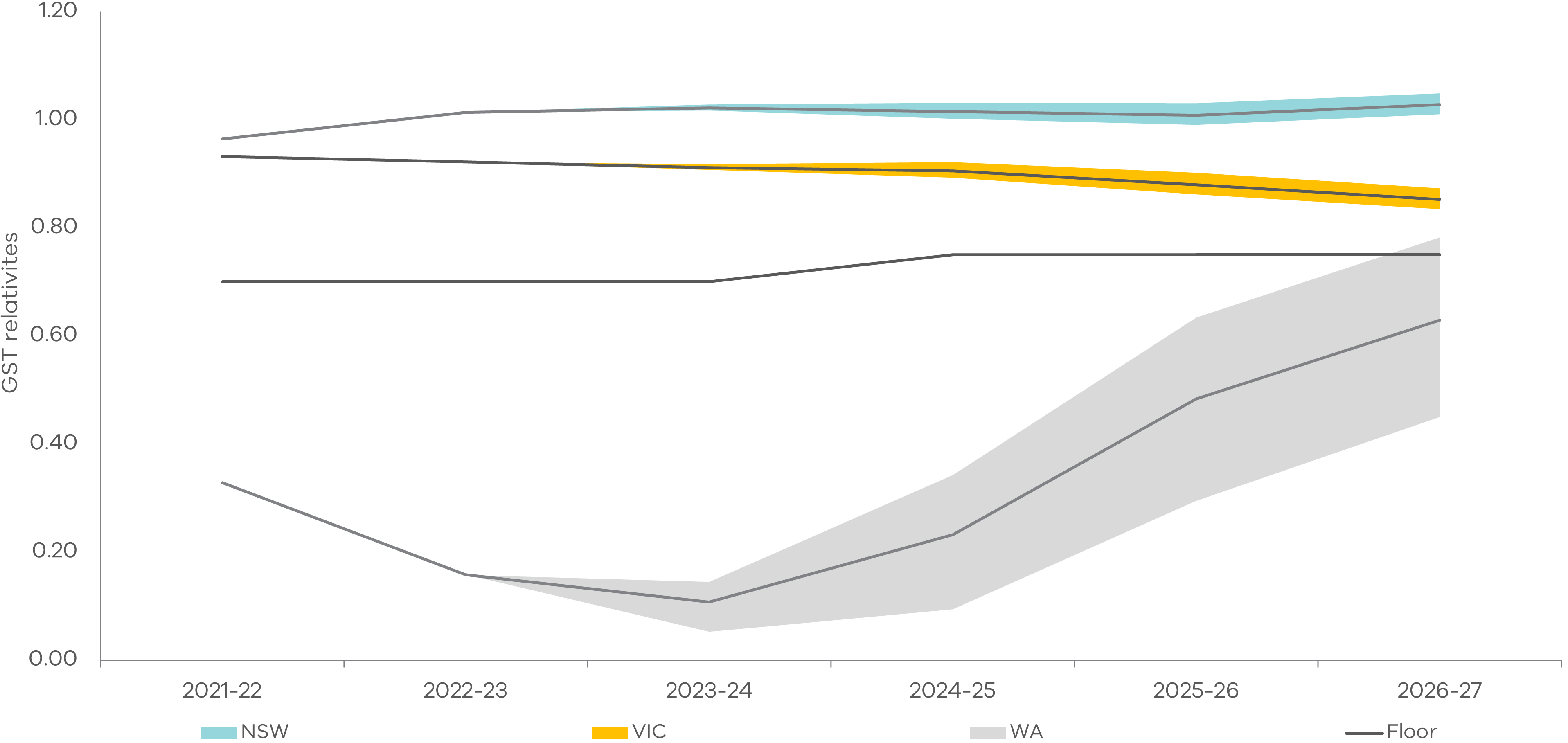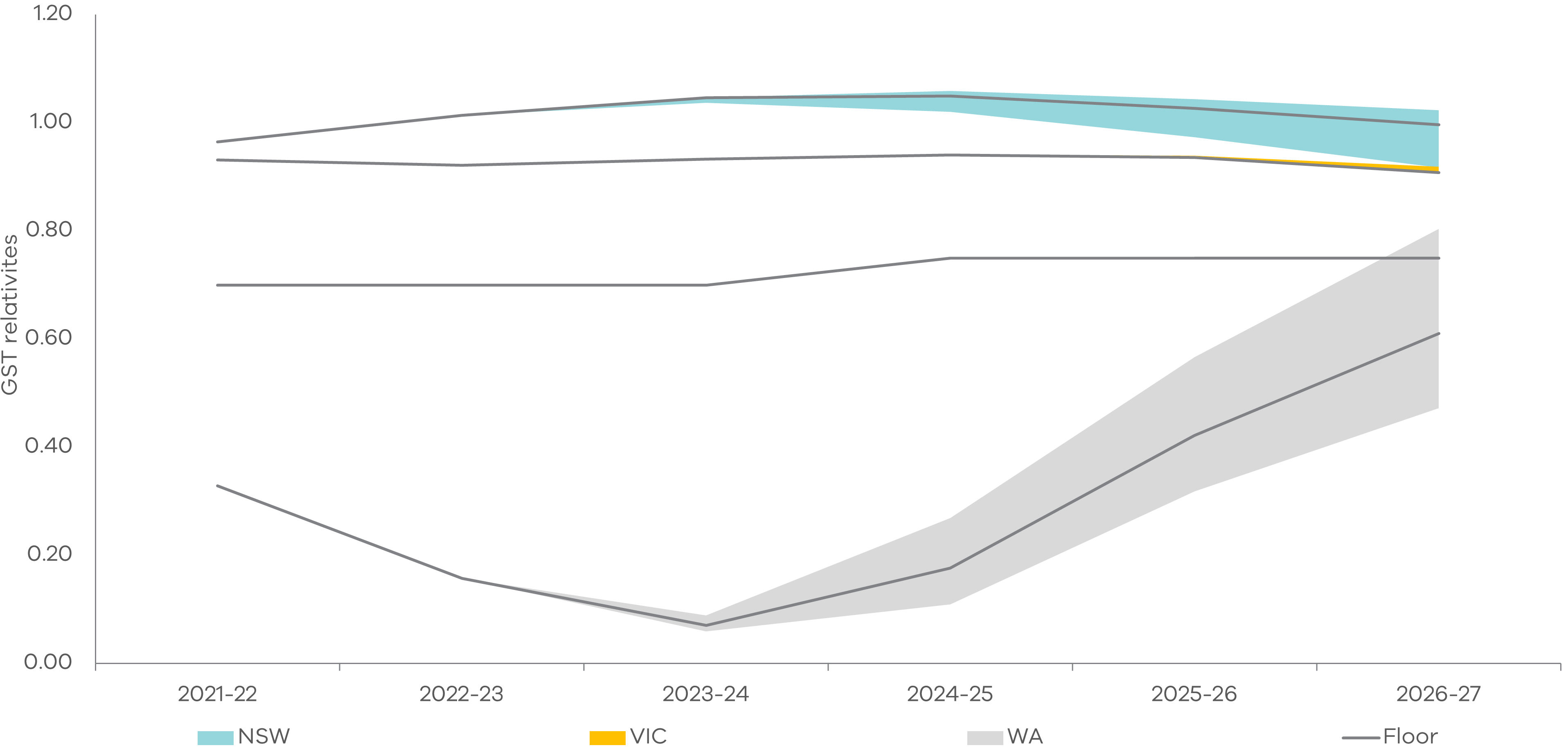- Published by:
- Department of Treasury and Finance
- Date:
- 1 Oct 2022
Carlos Jimenez, Amanda Gailiss and Arshiya Merchant1,2
1 Intergovernmental Relations Team, Economic Division, DTF
2 Author contact details: veb@dtf.vic.gov.au.
Acknowledgements: The authors would like to thank Matthew Yeung, Edward Jin, Rebecca Valenzuela, Helen Ratcliffe and Sheryl Bartlett for their assistance on this paper.
Disclaimer: The views expressed in this paper are those of the authors and do not necessarily reflect the views of DTF.
Suggested Citation: Carlos Jimenez, Amanda Gailiss and Arshiya Merchant (2022) The fiscal impacts of the new GST system on Victoria. Victoria’s Economic Bulletin, October, vol 6, no 3. DTF.
Abstract
In 2018, the Commonwealth Government legislated a new system for distributing GST revenue to the states and territories. This paper focuses on the potential fiscal impacts of the new GST system on Victoria and aims to determine the circumstances under which Victoria would be better or worse off under the new system. Our empirical approach systematically identifies key variables that drive the GST distribution, including states’ mining royalty revenues, land transfer duty collections and population growth.
These variables are analysed to determine their underlying relationship to our primary variable, mining royalty revenue, as well as understanding the role of any intra-state dependencies. Historical information is distilled into growth rates applied to past base values to inform hypothetical future scenarios. Our results show that across a range of potential scenarios, Victoria could require supplementary payments of between $3.5 billion to $6.5 billion to ensure it is not disadvantaged under the new GST system from 2021–22 to 2026–27.
1. Introduction
The goods and services tax (GST) is an indirect tax, introduced in 2000, levied on final domestic consumption in Australia.
GST is collected by businesses at the point of consumption on behalf of the Commonwealth Government, for redistribution to the states and territories (states). GST is an important revenue source for states as it is untied and not linked to the delivery of any specific services or targets, unlike other Commonwealth grants. As such, it provides budgetary flexibility for states. GST makes up a significant proportion of each state’s revenue. In 2020–21, GST comprised 25 per cent of total general government sector revenue for Victoria.
The system for distributing GST among the states is complex. The total GST collected, referred to as the ‘GST pool’, is divided between the states by the Commonwealth, based on advice provided by the Commonwealth Grants Commission (CGC), an independent advisory agency.
Since the introduction of GST, the CGC has been directed to follow the principle of horizontal fiscal equalisation (HFE) to make its annual recommendations on how GST should be distributed to the states. The principle of HFE seeks to balance the differences in each state’s demographic profiles, expense requirements and revenue raising capacities to enable each state to provide a similar standard of services and infrastructure to its residents. Following the principle of HFE, states with the ability to generate higher revenue relative to their expenses should receive less GST, while those that have a limited ability to raise revenue and have higher expenditure needs should receive more GST (CGC 2020).
To determine how much GST each state receives, the CGC assesses each state’s ability to raise its own revenue and its expenditure burden as if each state broadly followed the same policy as all the states. This assessment, based on the average of what all states do, ensures individual states do not alter their policies to gain more GST by, for example, spending more or raising less revenue. In assessing a state’s fiscal capacity, the CGC considers the state’s ability to raise revenue, such as tax and royalty revenues, as well as expenditures on services such as health, justice and school education. The CGC considers eight categories of states’ revenue, eleven expense categories and two capital categories, as well as a further eight disabilities and other assessments.
All categories are then considered together through a complex GST formula, arriving at a ‘GST relativity’ for each jurisdiction. Relativities represent the assessed GST needs of each state compared to the national average. A relativity value of 1.0 indicates a state has the average revenue raising capacity and expenditure burden and will receive its population share of the GST pool. A relativity value greater than 1.0 indicates that a state has a lower fiscal capacity and requires more than its population share of GST income. A relativity value lower than 1.0 indicates that a state has a greater fiscal capacity and requires less than its population share of GST income. The final GST share received by a state is a function of its relativity, population, the total GST pool and specific purpose payments provided by the Commonwealth (CGC 2020).
1.1 The new system of GST
In 2018, the Commonwealth legislated changes to the GST distribution system through the Treasury Laws Amendment (Making Sure Every State and Territory Gets Their Fair Share of GST) Act 2018. The new system revised the equalisation standard for states’ fiscal capacities achieved through the distribution of GST. Prior to this legislation, ‘full’ equalisation was achieved because each state’s fiscal capacity was lifted to the that of the strongest state. This means that states with lower fiscal capacities, greater expenditure needs and lower revenue raising capacity were allocated more GST so that they could provide government services to the same level as the state with the strongest fiscal capacity.
In contrast, the 2018 legislation aims for ‘partial’ equalisation. Specifically, it raises states’ fiscal capacities to the level of the stronger of New South Wales (NSW) or Victoria, regardless of whether another state has a higher fiscal capacity. If NSW or Victoria do not have the greatest fiscal capacity, any other state with a greater fiscal capacity is treated as effectively having a lower capacity and requiring more GST. Currently only Western Australia (WA) benefits from the new system.
The 2018 legislation also introduced a relativity floor – a minimum GST relativity for all states. It starts in 2022–23 at 0.7 and will increase to 0.75 by 2024–25. The floor insulates all states from receiving GST below a certain threshold, meaning that those with a strong fiscal capacity will continue to receive a minimum GST share. As the GST pool is divided among the states, maintaining this minimum GST share comes at the cost of other, fiscally weaker states.
To determine whether Victoria or NSW is the basis of the new equalisation standard and which states need to be lifted to the minimum relativity floor, the CGC still conducts its assessments of states’ fiscal capacities as under the former system and ‘full’ HFE. It publishes GST relativities reflecting this, referred to as assessed relativities. Relativities that form the basis of GST payments, after adjustments are made for the new system, are now simply referred to as GST relativities.
When the new system was introduced in 2018, the Commonwealth introduced a ‘no-worse-off guarantee’ which compensates states for any losses under the new system compared to the former system, funded from outside the GST pool. The new system will be phased in from 2021–22 to 2026–27, with the no-worse-off guarantee legislated until the end of that transition period. As a result, states are exposed to potential financial impacts of the new system compared to the former system once this guarantee expires.
1.2 Overview of this paper
This paper aims to deepen the understanding of the potential effects of the new GST system on Victoria’s GST revenue. We employ scenario modelling to demonstrate the size and range of impacts the new system may have on Victoria’s GST share, supported by a systematic analysis of the key variables that influence the GST distribution. The modelling includes:
- simple scenarios – changing one underlying variable at a time
- complex scenarios – shifting several variables simultaneously.
Our results show that across a range of feasible scenarios, Victoria is estimated to be between $3.5 billion and $6.5 billion worse off from 2021–22 to 2026–27.
Section 2 provides an overview of existing research and literature on the new GST system. Section 3 introduces the empirical methodology for this paper, including the selection of key variables. Section 4 discusses the modelling results and quantifies the potential costs of the new system of GST to Victoria. Section 5 concludes the paper and summarises the key results and findings.
2. Review of literature
Following the introduction of the new GST system in 2018, states have undertaken their own research to estimate its potential impacts on their respective revenues.
Modelling in this space is generally either a point estimation exercise or a more considered scenario-based approach. Table 1 provides a summary of relevant studies.
The first publicly released estimates on the new system were published in the Commonwealth’s Interim Response to the Productivity Commission Inquiry into HFE (PC 2018). The analysis took one set of variables to forecast a single ‘point’ estimate that showed the new system would benefit the states. This included forecasts of GST relativities taken from the Productivity Commission’s inquiry report, which were based on forecasts provided by some of the states. The Commonwealth concluded that none of the states would be worse off under the new system of GST.
Following the Commonwealth’s analysis, stakeholders have advanced their approach to modelling the impacts of the new GST system by using multiple scenarios. In scenario-based approaches, the model is either based on assumed GST relativities (a top-down approach) or inputs into the GST relativity calculation (a bottom-up approach).
Previous studies based on assumed relativities have typically taken historic relativity values. Victoria’s submission to the 2018 Commonwealth Senate Inquiry used this approach to model six scenarios (the second study in Table 1). Using historic relativities has the advantage of being simple to model as it does not require the calculation of GST relativities and avoids modelling potentially unrealistic scenarios by not making assumptions around how the factors affecting the GST distribution might interact in future.
The second approach to setting scenarios is to model the underlying variables that influence relativities. This approach provides flexibility to model potential future scenarios, as opposed to being bound by historical circumstances. The ACT Government’s 2021 submission to the Victorian Parliamentary Inquiry into Commonwealth Support for Victoria employed this methodology (ACT 2021). The ACT set scenarios by altering one variable at a time from a baseline projection, applied consistently across states. In the ACT submission, mining production for WA, specifically iron ore production volumes, was varied in isolation to demonstrate the impact of sustained high mining revenues. The analysis estimated that the total impact of the new system would be at least $2.6 billion in 2021–22, not including states that gained from the new system, which in this case was only WA.
To date, nine publications have estimated the potential impacts of the new GST system. The initial Commonwealth Government estimate from 2018 is the only work concluding that states, other than WA, would be better off under the new system. All other estimates show that states would be worse off.
Table 1: Results of previous modelling of the impacts of the new system on states
| Publication | Year | Approach | Total no-worse off payments ($ millions) | ||||||
| Time period | Years | Low | Average | High | |||||
| 1 | Commonwealth Interim Response to the PC Inquiry into HFE | 2018 | Point estimate | 2021-22 to 2024-25 | 4 | 0a | |||
| 2 | Victorian Submission to Commonwealth Senate Inquiry | 2018 | 6 scenarios, assumed relativities | 2026-27 | 1 | 267 | 1,723 | 4,391 | |
| 3 | Commonwealth Budget 2021-22 | 2021 | Point estimate | 2021-22 to 2024-25 | 4 | 7,607a | |||
| 4 | Tasmania, Occasional Paper | 2021 | Point estimate | 2021-22 to 2031-32 | 10 | 755b | |||
| 5 | Victorian submission to Victorian Parliamentary Inquiry | 2021 | 6 scenarios, assumed relativities | 2027-28 | 1 | 189 | 1,631 | 3,864 | |
| 6 | ACT submission to Victorian Parliamentary Inquiry | 2021 | 3 scenarios, projected relativities | 2021-22 | 1 | 2,629 | 3,108 | 3,463 | |
| 7 | SA submission to Victorian Parliamentary Inquiry | 2021 | Point estimate | 2027-28 | 1 | 300a,c | |||
| 8 | Commonwealth MYEFO 2021-22 | 2021 | Point estimate | 2021-22 to 2024-25 | 4 | 7,848a | |||
| 9 | Commonwealth Budget 2022-23 | 2022 | Point estimate | 2022-23 to 2025-26 | 4 | 14,771a | |||
Notes:
a. Figure is a single published estimate, not an average.
b. Payments to Tasmania only.
c. Payments to South Australia only.
3. Modelling approach, data and variables
In this paper, we further the scenario-based approach to estimating the potential impacts of the new system on Victoria’s GST revenue.
Our approach is to modify several variables to the CGC’s GST calculations to reflect potential future scenarios. Variables impact the final GST amount that states receive in a complex and dynamic way, so this approach can more closely resemble real-world circumstances than a point estimate approach. All publicly available analyses to date have involved modelling based on assumed relativities or scenario-based approaches moving a single variable at a time. This is a new approach to estimating the impacts of the new system of GST.
There are two key steps in implementing this scenario analysis: selecting variables and developing the scenarios. Variable selection in this study involved considering the key drivers of the GST distribution from the CGC’s calculations, ranking them by historical magnitude of impact on the GST distribution and assessing their likely influence on the GST shares. We identified one variable that has a significant impact on the GST distribution, mining royalty revenue, and identified how this interacts with other key drivers. These additional variables were selected based on their relationship with mining royalty revenue.
In the second step, we developed and ran the scenarios. Potential future growth rates of the selected variables were determined by analysing past trends, including how the variables relate to mining royalty revenue. Scenarios were developed by applying past growth rates to forecast future values in line with those trends.
The final set of scenarios focused on the most impactful driver of the GST distribution, mining royalty revenue. Firstly, we conducted a simple analysis to understand its material impacts on the GST distribution. These simple scenarios provided a useful starting point to understand the magnitude of the impact of this one variable. Then we extended this simple analysis using additional variables. The multivariate scenarios are a more realistic modelling approach that incorporates how the variables interact and demonstrates how a particular set of economic conditions can compound the impacts of the new GST system.
The following sections outline the steps we applied to select our variables and implement the multivariate scenario modelling approach to determine the potential fiscal impacts of the new GST system on Victoria.
3.1 Step 1: Selection of variables
We identified eight variables from the CGC’s assessment method that have been the most impactful in determining states’ final GST relativity and share from 2015–16 to 2021–22. Figure 1 shows the average redistribution of GST according to these variables and the factors of the GST distribution that can have the most influence on a state’s final GST revenue. These variables are also described by the CGC as ‘drivers’ of the GST distribution (CGC 2021).
Of all these variables, mining royalty revenue has the most notable impact on GST distributions by a significant margin. For the period 2015–16 to 2021–22, it had almost as large an impact on the distribution of GST as the next top three drivers combined (population dispersion, property sales and Indigenous status). Not only does it have the largest impact on the CGC’s assessment of relativities, but it also significantly affects the impacts of the new system of GST due to its influence on WA’s GST relativity, as discussed in more detail later in this paper.
The focus on mining royalty revenues targets this work on variables with the most significant impact both independently and when combined. Currently, iron ore is the single most significant commodity impacting the mining revenue assessment, and so we have selected this as a key underlying input to the assessment. As the likelihood of iron ore prices moving in isolation is low, we have constructed multivariate scenarios in addition to just testing the impacts of iron ore prices to capture interactions between other variables. These multivariate scenarios aim to take a more holistic view of potential low, moderate and high iron ore prices, by accounting for other potential flow-on effects to influential components of the GST assessment, like land transfer duty (LTD) and payroll tax.
Figure 1: Drivers of GST and their average redistribution of GST according to assessment category from 2015–16 to 2021–22
Note: (a) Other Sociodemographic Composition includes the effects of age, Indigenous disadvantage, household size, State contributions to the National Disability Insurance Scheme (NDIS) and the full effect of Sociodemographic Composition in Commonwealth funded government schools.
Source: CGC Update Reports, 2015 to 2021.
We exclude other factors presented in Figure 1 from our modelling, generally due to their relatively smaller impact on GST distribution and for ease of modelling and interpretation. Attempting to understand every permutation of variable interaction in the GST system is beyond the scope of this paper.
Variables that were considered but not incorporated into modelling include:
- Commonwealth payments – payments from the Commonwealth other than GST were excluded due to the discretion afforded to the Commonwealth Treasurer and the lack of clear, predictable economic rationale driving payments to underpin modelling.
- Indigenous status – the Indigenous population share of a state and its impact on expenditure requirements was excluded as this variable has remained relatively consistent over time and its interaction with other key variables influencing GST distribution are minimal.
- Urban centre characteristics – this assessment captures the cost of urban transport services for states combining five components: population density, the number of passengers and their mode of transport and distance travelled, topography and the presence of ferry services. This is excluded primarily because the model used for this work is a simplified representation of the CGC’s methods which does not include the level of detail required to alter the sub-components of urban centre characteristics.
3.1.1 Mining revenue
Mining revenue is the single most influential factor determining the redistribution of the GST pool, with over $8 billion set to be redistributed across the states in 2021–22 (CGC 2021). Mining has had an increasing impact on GST distribution since the onset of the mining boom from around 2009 and the expected value of the mining sector in some states has expanded substantially. The CGC’s assessments distribute less GST to states that have strong own-source mining revenues and more GST to states that have less or no capacity to raise mining revenues. This means less GST is distributed to WA and Queensland as they have a higher capacity to raise mining revenues due to greater shares of national natural resources. The CGC’s determination is based on an assessment of the mining production and royalty rate of each commodity.
In 2020–21, mining royalty revenue from WA made up 71 per cent of the total mining royalty revenue of all states, with iron ore comprising 93 per cent. Iron ore makes up a significant portion of the CGC’s mining revenue assessment, and so is considered as the key input for the mining assessment. Iron ore is also among the most volatile of the resources considered by the CGC and its price variability is relatively simple to model.
Higher iron ore prices should increase the impacts of the new system of GST on Victoria, compared to the former system. This is because higher iron ore prices are expected to decrease the GST relativities of resource rich states like WA. If WA has a GST relativity below the relativity floor, or Victoria and NSW’s relativities, GST would be re-distributed from all other states to lift it to these levels. This would leave other states worse off compared to the former system.
The mining boom and rise of iron ore prices from around 2009 to 2013 significantly affected GST distribution. Figure 2 shows iron ore prices and WA’s royalty revenues peaked around 2010 to 2013 and subsequently declined. Mining royalty revenues closely track iron ore prices. The early divergence between the two can be explained by a 50 per cent royalty rebate provided to iron ore miners in WA until April 2016.
The boom-bust cycles of the resources industry increase the volatility of GST distribution. Through the last mining boom, resource rich states such as WA, Queensland and the NT were assessed to require less GST as they earned more from resource revenues (CGC 2022). As booms end and resource revenues decline, these states then require more GST.
Figure 2: Western Australian mining royalty revenues and the global price of iron ore from 2008-09 to 2020-21
Source: Western Australian budget publications, ABS data, Federal Reserve Bank of St. Louis.
3.1.2 Population dispersion
Population dispersion describes the geographic spread of people and households across the country. The GST system recognises that remote populations cost more to service, so more GST is allocated to states with higher shares of remote populations.
Population dispersion affects the CGC’s assessment of how much it costs a state to provide justice services, post-secondary education, schools and health services, among others. The CGC’s measure of population dispersion uses the Accessibility/Remoteness Index of Australia (ARIA) classifications.
As an example, the NT and Queensland receive a higher share of the GST distribution due to their high incidence of remote populations. In its 2022 update, the CGC estimated that higher shares of remote populations would result in NT and Queensland receiving an additional $1.37 and $1.01 billion more GST than their population shares respectively in 2022–23 (CGC 2022).
3.1.2.1 Population dispersion and mining
The mining industry has influenced the demographics of remote Australia. The mining boom was linked to population growth in remote mining towns. Due to a low starting base, even a small increase in remote populations can result in relatively large growth rates. For example, the Pilbara region, which produces the largest proportion of WA’s iron ore and is classified as a remote region, saw strong population growth during the mining boom (Garnett 2012). More generally, during the mining boom, population growth for remote and very remote areas in WA was over 2 per cent. When the mining boom slowed, population growth in remote and very remote areas contracted, falling below zero. This is shown in Figure 3 below.
Figure 3: Population growth in remote and very remote areas
Source: ABS, Regional Population 2019–20.
3.1.3 Population growth
While population growth was not identified as a key driver of GST distribution, it is included in the scenarios modelled. This is in part because population growth lends easily to modelling exercises, and because its relationship to changes in mining royalties are clear and can be easily accounted for
Population growth is a direct input into two variables in the GST system – investment and net borrowing – and it also impacts the CGC’s assessment of other expenditures, including states’ base administrative scale costs and services to industry expenses.
The CGC’s Research Paper No. 2 (CGC 2021) explains that the faster the population grows, the more states need to spend on schools, hospitals, roads and other infrastructure. Higher population growth, relative to other states, places a higher investment burden on that state and subsequently increases its GST requirement. Over the past decade, states have experienced varied population growth. This can be decomposed into changes in birth rate, overseas migration or interstate migration. Population growth is both a demand side and supply side factor, linked closely to an increase in economic activity driven by, for example, a mining boom (PM&C 2019)
3.1.3.1 Population growth and mining
During the mining boom, from around 2008–09 to 2013–14, WA’s population grew more quickly than the populations of NSW and Victoria, averaging over 3 per cent in some years. The boom in WA’s population appears to be related to the circumstances of WA, where the mining industry was experiencing unprecedented growth supported by a rapid increase in overseas migration (Garnett 2012), shown in Figure 4 below. We have incorporated these implied relationships into modelling the impacts of the new system.
Figure 4: Population growth in Victoria, New South Wales and Western Australia from 2008 to 2021
Source: ABS population data.
Note: COVID-19 impacts population growth in 2020–21.
3.1.4 Land transfer duty
Land transfer duty (LTD) is payable on most transactions that result in a change of ownership of land and associated real estate assets in most states. A state’s LTD revenue relies largely on dwelling prices and property transaction volumes. Factors that influence LTD revenue include:
- housing demand, such as from net overseas migration
- credit conditions and mortgage rates
- consumer sentiment towards the housing market.
The CGC assess a state’s capacity to raise LTD by calculating how much it could earn with its tax base, the total value of property transferred and the average tax rate of all states. If a state can earn more LTD than the average state, it will be assessed as requiring relatively less GST.
Revenue from property-based taxes, such as land tax and land transfer duty, is subject to the cyclical movement of property markets, typically related to changes in interest rates and/or changes in sentiment (DTF 2022).
3.1.4.1 LTD and mining
There is some evidence of a positive relationship between mining and LTD revenues for resource rich states like WA. After the mining boom, property prices and LTD revenue declined in WA – house prices in Perth decreased by 20 per cent from June 2014 to December 2020 (Corelogic 2022). In response to recent high iron ore prices, ANZ economists had predicted the average house price in Perth would rise by 12 per cent in 2021 (Emmett and Timbrell 2020).
Figure 5 presents the three-year moving average growth rate of LTD. LTD revenue is relatively variable so relationships are less clear, but it shows LTD in WA and the eastern states followed different patterns at different stages of the mining boom. Particularly towards the end of mining boom, after iron ore prices began to fall after 2012–13, growth in LTD revenue in WA fell and was negative from 2014–15 to 2016–17, compared to the eastern states where it continued to grow throughout this period.
Figure 5: Growth rate of stamp duty on conveyances for NSW, Victoria and WA
Source: Victorian, NSW and WA previous state budget papers, 2008–09 to 2021–22.
3.1.5 Payroll tax
Payroll tax is levied by states on the remuneration of employees and is collected by employers for state governments. Across the states, payroll tax is typically applied to businesses with payrolls over a certain threshold and can also vary depending on a business’s total payroll. The CGC assesses states’ capacity to raise payroll tax using their average tax rates and payment thresholds. States with greater capacities to raise their own payroll tax revenues are assessed by the CGC to need less GST revenue.
Payroll tax is based on the total remuneration of employees, which is dependent on states’ macroeconomic conditions. As the economy grows and firms employ more staff or offer higher wages, the payroll tax base and collections also grow (DTF 2021).
3.1.5.1 Payroll tax and mining
There is some evidence of a positive relationship between mining revenues and payroll tax revenues in resource rich states. In 2013, this was demonstrated by WA in its mining boom, where improved employment and business outcomes are estimated to have raised real wages by 6 per cent and lowered unemployment by about 1.25 percentage points (RBA 2014). This is supported by growth in payroll tax in WA, with the annual growth rate peaking in 2010–11 at almost 20 per cent, demonstrated in Figure 6.
Figure 6: Annual growth rate of payroll tax for NSW, Victoria and WA
Source: Victorian, NSW and WA previous state budget papers, 2008–09 to 2021–22.
3.2 Step 2: Scenario modelling
The scenarios in this paper are estimated through a simplified model of the CGC’s GST formula to arrive at GST relativities and distribution to states. This is done under both the new and former GST systems. The modelling adjusts our selected variables across Victoria, NSW and WA, and measures the corresponding impact on Victoria’s GST share.
The focus of this paper is the impacts of the new system of GST on Victoria, so Victorian variables are modelled in the scenarios. NSW was selected as it is the largest state, but also because it provides the benchmark for the standard of equalisation under the new system along with Victoria. Under the new system, if a state’s GST relativity falls below Victoria and NSW’s then it will be treated as effectively having a lower capacity and requiring more GST. WA was selected due to its significant mining royalty revenues, as mining revenues are the largest driver of the GST distribution. WA is also the state most likely to fall below the GST floor and the new equalisation standard of Victoria and NSW’s relativities. However, other resource rich states such as Queensland may experience similar circumstances to WA in the future if coal prices increase significantly.
The model broadly replicates the CGC’s methods of taking states’ revenue raising capacities and expense burdens to arrive at their GST relativities. There are some key differences, including that our model takes aggregated inputs on states’ spending and revenues from past CGC data. To fully replicate the CGC’s methodology would require comprehensive forecasts for all states that are not available, which is beyond the scope of this article. The CGC’s methodology uses detailed underlying socio-demographic and state budget data, including service use and costs by sub-populations. Every data point would need to be forecast into the long term, which would likely be inaccurate.
Our model estimates the GST revenues Victoria would receive under both the new and former GST systems. The difference between new and former systems for states that are disadvantaged under the new system is equal to the no-worse-off payments they would receive (or very similar, due to the specific calculation of no-worse-off payments).
Scenarios are modelled from 2021–22 to 2026–27. This timeframe aligns with the period of the transition to the new GST system which fully takes effect in 2026–27. Later years are not included primarily due to concerns around the accuracy of forecasting over a longer time horizon.
In developing our scenarios for the period between 2021–22 to 2026–27 we use:
- published actuals and forecasts for revenue and expenses from states’ budget publications
- relativities for past years from the CGC’s relevant final reports
- DTF forecasts of population and the GST pool, based on Commonwealth budget publications.
Using actual values from 2020–21, the selected variables identified in Step 1 are then altered in the model using historical growth rates, with all other variables remaining unchanged.
In addition, this model assumes that the GST methodology remains consistent over the period until 2026–27. We acknowledge that the CGC is expected to complete a methodology review by 2025, potentially impacting 2025–26 and 2026–27.
The multivariate scenarios selected track the impacts of iron ore prices on other variables identified in Step 1 above, including:
- population growth
- population dispersion
- land transfer duty
- payroll tax.
As royalties track iron ore prices, the scenarios use iron ore price forecasts from the Consensus Economics survey of iron ore price as our starting point. Consensus Economics reports prices forecasts from a range of sources and then provide high, low and mean prices in USD per dry metric tonne. The low forecasts are the minimum of all forecasts from their sources and the high forecasts represent the maximum. These price forecasts are used as inputs into our simplified GST model for the period 2021–22 to 2026–27, which then creates projections of mining/iron ore revenue going forward.
3.2.1 Simple scenarios: Moving iron ore prices in isolation
3.2.1.1 Scenario 1a: Low iron ore prices
This scenario is an extremely conservative view of potential iron ore prices, taking the lowest reported iron ore forecasts surveyed by Consensus Economics at time of writing, to understand the impact on Victoria’s GST share.
Iron ore prices are generally forecast by governments and producers to return to low ‘long-run averages’ of around US$60/tonne. In reality, prices fluctuate significantly over time and most organisations caveat long-run forecasts of commodity prices if they are issued at all. The Australian Government Office of the Chief Economist forecasts iron ore prices until 2025, after which they use projections to determine prices.
3.2.1.2 Scenario 2a: Moderate iron ore prices
This scenario takes the mean of iron ore price forecasts surveyed by Consensus Economics and represents a moderate case or our baseline scenario to assess a reasonable outcome.
3.2.1.3 Scenario 3a: High iron ore prices
This scenario takes the highest iron ore forecast price from Consensus Economics. Generally, higher iron ore prices would be expected to reduce Victoria’s GST revenue under the new system compared to the former, as higher iron ore prices are expected to decrease the GST relativity of WA. If WA’s relativity is lower than the legislated floor or Victoria and NSW’s relativity, GST would be re-distributed from other states to lift its relativity, leaving all other states worse off.
3.2.2 Multivariate scenarios: Combining mining prices with other variables
3.2.2.1 Scenario 1b: Low iron ore prices and economic downturn in Western Australia
This multivariate scenario represents the occurrence of a decline in iron ore prices and a decline in economic activity overall. This simulates the effects of decreasing mining revenues combined with the associated decline in economic activity in WA, which holds most of Australia’s iron ore resources.
To simulate this scenario, we have used the low iron ore prices and lower than average growth rates for other own-source revenue streams in WA, including LTD and payroll tax. Population growth and dispersion are assumed to decline due to net migration away from WA as economic opportunities decline.
For NSW and Victoria, the opposite is assumed – population growth is assumed to be high, and growth in LTD and payroll above average.
This scenario assumes the following for each year from 2021–22 to 2026–27:
- 2020–21 actuals as the baseline for growth rates
- ‘low’ iron ore prices obtained from Consensus Economics
- historically low growth rates applied to LTD and payroll revenues, population and population dispersion for WA
- historically high growth rates applied to LTD and payroll revenues, population and population dispersion for Victoria and NSW
- past 10-year average growth rates applied to these variables for all other states.
Growth rates are taken from the period of 2013–14 to 2016–17, relating to the waning of the mining boom in WA.
3.2.2.2 Scenario 2b: Moderate iron ore prices and long-term growth rates for other variables
This multivariate scenario tests what would occur if all states experienced growth in the selected variables in line with 10-year average growth rates. This scenario relates to a ‘status quo’ generally continuing until the end of the transition period in 2026–27.
This smooths out peaks or troughs in economic circumstances and is useful for understanding the impacts of median forecast iron ore prices with similarly moderate outcomes for LTD, payroll tax and population growth. This scenario does not adjust levels of population dispersion and assumes current trends continue as a baseline.
3.2.2.3 Scenario 3b: Economic boom in WA and unfavourable conditions in eastern states
This multi-variable scenario tests the impacts of high iron ore prices and the potential flow on effects to the other selected variables, representing an economic boom in WA and the inverse in eastern states. Historically, high iron ore prices have increased economic activity in WA due to its concentration of iron ore resources. Population growth and population dispersion in WA are assumed to grow strongly. This simulates movement of people taking advantage of economic opportunities and relocating to remote areas servicing the resources industry.
This is coupled with the opposite occurring in NSW and Victoria. A resources boom in WA is assumed to cause migration away from the eastern states, decreasing population growth. This also results in lower own-source revenues for these states.
More specifically, this scenario assumes the following for each year from 2021–22 to 2026–27:
- high iron ore prices from Consensus Economics
- 2020–21 actuals as the baseline for relevant growth rates
- historically high growth rates applied to LTD and payroll revenues, population and population dispersion for WA
- historically low growth rates applied to LTD and payroll revenues, population and population dispersion for Victoria and NSW
- past 10-year average growth rates applied to these variables for all other states.
Growth rates are taken from the period of the mining boom between 2009 to 2013, which was a time of high economic growth in WA.
4. Results and discussion
In this section, we present the results of our modelling under six scenarios.
The scenarios consider how the single most influential driver of the GST distribution, mining revenues, could affect Victoria’s GST share. The analysis is then expanded to include a range of variables and their interactions with each other, given the range of forecasts for iron ore, in turn affecting mining royalty revenues.
4.1 Fiscal impacts of the new system and no-worse-off payments
To test the impacts of the new system on Victoria, we have calculated the difference in GST revenue under the new and former systems, which are represented by no-worse-off payments for the period of the no-worse-off guarantee.
Under all the scenarios, Victoria is estimated to receive less GST under the new system compared to the former system, requiring supplementary no-worse-off payments to be made, shown in Table 2. Victoria is estimated to require no-worse-off payments of between $3.5 billion to $6.5 billion from 2021–22 to 2026–27 under the most and least favourable scenarios (scenarios 1a and 3b respectively).
Table 2: Estimated no-worse-off payments to Victoria under all scenarios modelled, $ millions
| Scenario | 2021–22 | 2022–23 | 2023–24 | 2024–25 | 2025–26 | 2026–27 | Total |
| Scenario 1a: low iron ore price | 55 | 1,145 | 1,230 | 855 | 245 | - | 3,525 |
| Scenario 2a: moderate iron ore price | 55 | 1,145 | 1,320 | 1,145 | 585 | 350 | 4,600 |
| Scenario 3a: high iron ore price | 55 | 1,145 | 1,460 | 1,510 | 1,025 | 870 | 6,055 |
| Scenario 1b: low iron ore price, multivariate | 50 | 1,120 | 1,320 | 990 | 485 | - | 3,965 |
| Scenario 2b: moderate iron ore price, multivariate | 55 | 1,150 | 1,420 | 1,295 | 825 | 535 | 5,285 |
| Scenario 3b: high iron ore price, multivariate | 55 | 1,185 | 1,515 | 1,575 | 1,135 | 1,020 | 6,490 |
Note: Figures have been rounded to the nearest $5 million.
Estimated no-worse-off payments, or the difference in GST distributions between the two systems, follow the same trends as expected from the relativities.
- Victoria would receive more no-worse-off payments under the high iron ore price scenarios 3a and 3b compared to the former system, owing to WA’s relativity being lower and requiring more GST to be lifted to the new equalisation standard or relativity floor.
- Victoria receives smaller no-worse-off payments when iron ore prices are low, as shown in scenarios 1a and 1b, when compared to the former system.
- Overall, Victoria requires no-worse-off payments in each scenario for all years under the new system, except for the final year in the low iron ore price scenarios 1a and 1b. This represents a very low iron ore price and an extreme outcome. Nonetheless, Victoria still receives no-worse-off payments for most years under this scenario and significant payments in aggregate over the period.
4.2 Comparison of simple and multivariable scenarios
Victoria is estimated to receive higher no-worse-off payments under the multivariate scenarios than the corresponding simple scenarios with the same iron ore price assumptions. For example, under scenarios with low iron ore prices, Victoria receives higher no-worse-off payments in the multivariate scenario 1b ($3.9 billion) than under the simple scenario 1a ($3.5 billion), demonstrated in Figure 7.
No-worse-off payments are higher in the multivariate scenarios, as overall WA’s relativity is slightly lower in all of the multivariant scenarios than in the corresponding simple scenarios with the same iron ore prices. Similarly, Victoria’s relativity is slightly higher under the multivariant scenarios.
This difference in relativities is partly due to different scenario approaches used, meaning the results are not directly comparable. Forecasts of LTD revenues, payroll tax revenue, population and population dispersion are based on budget publications in the simple scenarios, whereas they are assumed based on past growth rates in the multivariate scenarios.
For example, WA’s slightly lower relativity in the multivariate scenarios may partly be driven by the higher baseline forecasts of LTD and payroll tax revenues compared to the simple scenarios. This increases WA’s revenue raising capacity, decreases its relativity and causes Victoria to require more no-worse-off payments.
Figure 7: Estimated no-worse-off payments to Victoria under all six scenarios
Therefore, to test the effect of the variables introduced in the multivariate scenarios on estimated no-worse-off payments, we compare the proportional differences of the low and high iron ore scenarios under the simple and multivariate methods to the moderate scenarios 2a and 2b, which are used as a ‘baseline’. We do this by calculating the percentage difference of the high and low scenarios to the moderate scenarios under the simple and multivariate approaches.
Under the simple and multivariate high iron ore price scenarios, 3a and 3b respectively, Victoria receives larger no-worse-off payments than in the respective moderate scenarios under the simple and multivariate methods 2a and 2b. This is expected, because as iron ore prices rise, WA’s relativity drops. However, this advantage is retained under the new system because of the new standard of equalisation and the relativity floor, at the expense of Victoria and other states losing GST share. These outcomes are demonstrated in Figure 7 above for the simple and multivariate approaches.
Figure 8: Proportionate differences in no-worse-off payments to Victoria between baseline scenarios and high and low iron ore price scenarios
Compared to the simple scenarios, the multivariable method introduces factors that compound the impact of iron ore prices on no-worse-off payments (changes in LTD and payroll tax revenue) and those that counteract it (changes in population and population dispersion).
LTD and payroll tax revenue compound the effect of iron ore prices and mining revenues as they are assumed in the multivariate scenarios to move in the same way. In the high iron prices multivariate Scenario 3b, LTD and payroll tax revenue in WA grow at historically high rates. This increases WA’s revenue raising capacity, reducing its GST requirement, which in turn increases the impact of the new system and no-worse-off payments for Victoria.
Population and population dispersion are also assumed to grow at higher rates in WA with high iron ore prices under Scenario 3b, as discussed above, simulating population growing in mining areas spurred by greater economic opportunities. This increases cost pressures for WA and so its GST requirement. As such, the impact of the new system and no-worse-off payments to Victoria are reduced.
Figure 8 shows that in combination, the introduction of the new variables in the multivariable scenarios means the difference between the high (3b) and baseline (2b) iron ore scenarios is less than that between equivalent simple scenarios (3a and 2a). Compared to the moderate scenario baselines, no-worse-off payments are 32 per cent higher in the simple Scenario 3a, compared to 23 per cent higher in the multivariate Scenario 3b.
As such, for the particular set of circumstances assumed in this scenario, population growth and population dispersion, which limited the extent to which iron ore prices reduced no-worse-off payments for Victoria, have a greater impact on the modelling than payroll tax and land transfer duty.
The same is true in the opposite direction under the low iron ore price scenarios, also shown in Figure 8. Victoria’s no-worse-off payments are proportionately higher compared to the baseline scenarios under the multivariable method for low iron ore prices 1b (see Figure 8). This means population and population dispersion are counteracting the impact of land transfer duty and payroll tax.
4.3 GST relativities under the former system
The estimated GST relativities under the former system for Victoria, NSW and WA are presented below for each of the scenarios estimated, 1a through 3b. Relativities under the former system are presented to show the effect of the scenarios on states’ fiscal capacities directly. The financial impacts on Victoria, or dollar value impact, of the new system, presented in the section above, are derived from these changes to states’ fiscal capacities.
Victoria, NSW and WA’s relativities are presented as they are the focus of the scenario modelling. WA’s relativity is also presented, as the impact of the new GST system to Victoria in the medium term is largely dependent on WA’s relativity. WA is the only state with a relativity currently below the relativity floor and Victoria and NSW’s relativities. This creates a disadvantage to Victoria under the new GST system compared to the former, as it no longer gains GST to raise it to WA’s higher fiscal standard.
Under all three of the simple scenarios – 1a, 2a and 3a – WA’s relativity increases over time until 2026–27, as the iron ore price is expected to fall across all forecasts, shown in Figure 7. Conversely, Victoria and NSW’s relativities decline as iron ore prices fall. This is expected, as lower iron ore prices mean WA receives less own-source mining royalty revenue and as such requires more GST, reflected in a higher relativity.
WA’s relativity rises more under Scenario 1a with the lowest iron ore prices, than under Scenario 3a with higher iron ore prices. The opposite occurs for Victoria and NSW. We anticipated this outcome, as a lower iron ore price implies lower mining revenue for WA and a greater need for GST funding reflected in a higher GST relativity.
WA’s relativity falls below the floor introduced by the new GST system in all scenarios in all years, except for the final year of the ‘low’ iron ore price scenarios (scenarios 1a and 1b). It is always below both NSW and Victoria’s GST relativities.
The results demonstrate that there is a wide range of potential outcomes in terms of GST relativities from the iron ore forecasts selected. The results suggest it is likely Victoria would require supplementary payments to ensure it is not disadvantaged under the new GST system.
Results from the multivariate scenarios show the same general trends, as demonstrated in Figure 10.
Figure 9: GST relativities under simple scenarios 1a, 2a and 3a
Note: For NSW and Victoria, the upper range represents Scenario 3a or high iron ore prices, while the lower range represents Scenario 1a or low iron ore prices. This is inverted for WA, where the lower range is Scenario 3a or high iron ore prices, while the upper range is Scenario 1a with low iron ore prices.
Figure 10: GST relativities under multivariate scenarios 1b, 2b and 3b
Note: For NSW and Victoria, the upper range represents Scenario 3b or high iron ore prices, while the lower range represents Scenario 1b or low iron ore prices. This is inverted for WA, where the lower range is Scenario 3b or high iron ore prices, while the upper range is Scenario 1b with low iron ore prices.
5. Conclusion
This paper demonstrates that Victoria is likely to be disadvantaged by new arrangements for distribution of the GST, requiring ongoing and significant no-worse-off payments from the Commonwealth Government.
The results of this paper add to the existing body of evidence estimating the potential fiscal impacts of the new system of HFE and its impacts on the distribution of GST. We contribute to the literature by examining individual factors that impact on the GST pool and relativity values and using a novel methodology to analyse the GST. The novel multivariate scenario approach strengthens the argument that Victoria is likely to be worse off under the new system of GST. We have mitigated the limitations of the study through our intentional selection of variables, analysis of relationships between the variables and use of plausible growth rates by reviewing historical situations.
This paper highlights the significant impacts that the new system of GST may have on Victoria’s fiscal position. It demonstrates the real risk to Victoria’s revenue if the new system remains as is and the no-worse-off guarantee is not extended beyond 2026–27. Our results show that across a range of potential scenarios, including conservative scenarios where Victoria experiences strong economic conditions and WA poorer conditions, Victoria could be worse off by between $3.5 billion to $6.5 billion from 2021–22 to 2026–27 without supplementary Commonwealth payments to compensate for the impact of the new GST system.
The work in this paper demonstrates the importance of considering the breadth of interrelated factors that go into the distribution of GST when making projections and estimating the impacts of the new system. The scenarios in this paper only represent a simplified set of possible circumstances. In reality, many more factors will change in future to impact the GST assessment. While we have relied on one set of inputs, replicating historical scenarios may lead to inaccurate results, as demonstrated by the differences between the simple and more complex scenarios in this paper.
6. References
References for this Victoria’s Economic Bulletin research article.
ACT Government (2021) Victorian Parliamentary Inquiry into Commonwealth Support for Victoria.
Akbar D, Rolfe J and Kabir S.M (2013) ‘Predicting impacts of major projects on housing prices in resource based towns with a case study application to Gladstone, Australia’, Resources Policy, 38, 481–489, 10.1016/j.resourpol.2013.07.001.
Australian Bureau of Statistics (2012) Taxation Revenue, Australia, 2010–11 [State taxation revenue from 2001–02 to 2010–11].
Commonwealth Grants Commission (2015) Report on GST Revenue Sharing Relativities 2015 Review.
Commonwealth Grants Commission (2016) Report on GST Revenue Sharing Relativities, 2016 Update.
Commonwealth Grants Commission (2017) Report on GST Revenue Sharing Relativities, 2017 Update.
Commonwealth Grants Commission (2018) Report on GST Revenue Sharing Relativities, 2018 Update.
Commonwealth Grants Commission (2019) Report on GST Revenue Sharing Relativities 2019 Update.
Commonwealth Grants Commission (2020) Report on GST Revenue Sharing Relativities 2020 Review.
Commonwealth Grants Commission (2021) Why states get different shares of GST.
Commonwealth Grants Commission (2021a) Report on GST Revenue Sharing Relativities, 2021 Update.
Commonwealth Grants Commission (2021b) Relativities over time and GST populations [Supporting data for the 2020 Review Final Report].
Commonwealth Grants Commission (2022) Fiscal equalisation and mining booms.
Commonwealth Grants Commission (2022) GST Revenue Sharing Relativities, 2022 Update.
Corelogic (2022) Corelogic housing and economic update January 2022. [Data set].
Department of Treasury and Finance, Tasmanian Government (2021) Occasional Paper: New GST distribution arrangements.
Emmett F and Timbrell A (2020) Inspecting the 2021 housing market, ANZ(opens in a new window).
Garnett A (2012) ‘The Effect of the Resources Boom on the Population and Labour Market of Western Australia’, Economic Papers: A journal of applied economics and policy, 31, 10.1111/j.1759-3441.2011.00154.x.
Government of South Australia (2021) Victorian Legislative Assembly Economic and Infrastructure Committee, Inquiry into Commonwealth Support for Victoria.
New South Wales Treasury (2008–09 to 2020–21). New South Wales State Budget previous publications.
Productivity Commission. (2018). Horizontal Fiscal Equalisation Productivity Commission Inquiry Report.
Battellino R, (2010) Mining Booms and the Australian Economy. Reserve Bank of Australia.
Submission to Senate Economics Legislation Committee Inquiry on the provisions of the Treasury Laws Amendment (Making Sure Every State and Territory Gets Their Fair Share of GST) Bill 2018, Victoria State Government, 24 October 2018
The Commonwealth of Australia (2018) Productivity Commission inquiry into horizontal fiscal equalisation: Government interim response.
The Commonwealth of Australia (2021) Federal Financial Relations Budget Paper No. 3 2021–22.
The Commonwealth of Australia (2021b) Mid-Year Economic and Fiscal Outlook 2021–22.
Treasury Laws Amendment (Making Sure Every State and Territory Gets Their Fair Share of GST) Act 2018 (Cth) (Austl.)
The Department of Prime Minister and Cabinet (2019) Planning for Australia’s Future.
Victorian Department of Treasury and Finance (2021) Inquiry into Commonwealth Support for Victoria.
Victorian Department of Treasury and Finance (2022) Victorian Budget 2022/23, Strategy and Outlook(opens in a new window).
Victorian Department of Treasury and Finance (2021) Victorian Budget 2021/22, Statement of Finances(opens in a new window).
Victorian Department of Treasury and Finance (2008–09 to 2020–21) Victorian State Budget previous publications.
Victorian Government (2018) Submission to Senate Economics Legislation Committee Inquiry on the provisions of the Treasury Laws Amendment.
International Monetary Fund (2022) Global price of Iron Ore, Federal Reserve Bank of St. Louis(opens in a new window).
Western Australian Department of Treasury. (2008–09 to 2020–21), Western Australia State Budget previous publications.


